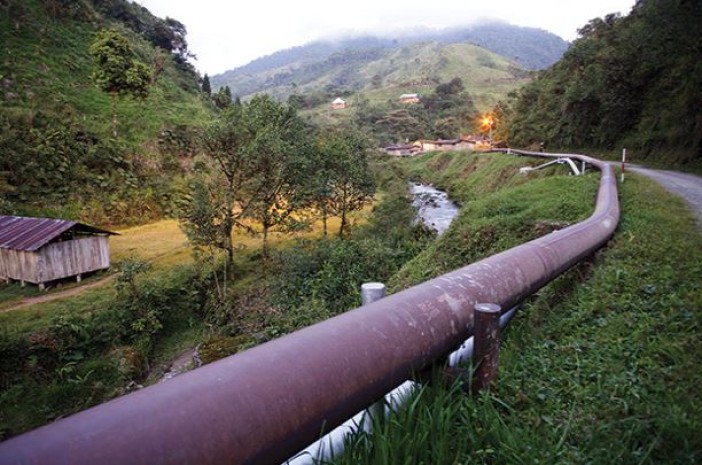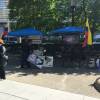Ecuador Internacional
How To Do Business in Ecuador
Alberta Oil Magazine 09/05/2016

Foto: Alberta Oil Magazine
The resource opportunities are there, but a corrupt legal system remains a significant barrier for foreign investment. Ecuadorian plaintiffs going after Chevron Canada’s assets in an Ontario court are a testament to the risks involved.
Opportunities
In 2015, Ecuador had 8.8 billion barrels of proved crude oil reserves and a year-on-year increase of 7 percent, giving it the third-largest oil reserves in South America. Ecuador is a member of OPEC, producing 556,000 b/d of liquids in 2014, of which crude oil made up 555,000 b/d. The Ishpingo-Tambococha-Tiputini fields in Yasuní National Park have been opened to exploration following the lifting of a moratorium to protect biodiversity and prevent damage to isolated indigenous cultures. The government says the fields’ development is now in the national interest. Ecuador is familiar territory to Canadian firms. In 1999, Alberta’s AEC, which later became Encana, bought up Pacalta Resources and its operations in Ecuador for $748 million. Encana later bought a 36.3 percent stake in the Oleoductos Crudos Pesados (OCP) pipeline.
Risks
In 1992, Ecuador was pushed out of OPEC, owing the organization more than US$5 billion, before rejoining it in 2007. The U.S. Energy Information Administration says, “Ecuador has a challenging investment environment prompted by government initiatives to increase the share of crude oil revenue for the state, which has contributed to near-stagnant oil production.”
A “challenging investment environment” is an understatement. Encana got caught up in a controversy over alleged environmental damage. It was also alleged that security forces hired by the OCP pipeline consortium, in which Encana had a stake, imprisoned and tortured the pipeline’s opponents. In 2005, one month after protesters sabotaged an Encana pipeline, the company sold all of its Ecuadorian assets to China’s Sinopec and CNPC.
The Chinese soon took over the rest of Ecuador’s oil sector when the government, after a debt default in 2008, traded 90 percent of its oil output to China for cash. The Chinese bailout covered two thirds of its US$6.2 billion financing needs, yet at the time of the deal Ecuador’s annual oil sales were worth about $13 billion.
But the strangest deal has wound up in an Ontario court, even though it has nothing whatsoever to do with Canada, as Ecuadorian tribes sued Chevron over something that happened long before Chevron operated in Ecuador. Texaco partnered upstream with the government, to which it sold its share in 1992, paid its part of an expensive environmental clean-up, and got a full discharge from any further liability. But it was Texaco that got sued by indigenous communities, represented by activist New York lawyer Stephen Donziger, in 1993 for US$113 billion. Chevron took over Texaco in 2001, inheriting Donziger’s lawsuit for what he called an “Amazonian Chernobyl.” In 2011, an Ecuadorian court told Chevron to pay US$18.5 billion. What followed will sound familiar to oil sands producers: Actor Robert Redford, musician Sting and actress Daryl Hannah all took up the cause, and plaintiffs demonstrated in traditional Ecuadorian attire outside a New York federal courthouse. They disrupted a Chevron shareholders’ meeting, and organized “toxic tours” for enthusiastic media and celebrities. A U.S. judge ruled that the Ecuadorian judge had indeed been bribed by Donziger.
Yet, the Supreme Court of Canada authorized an Ontario court to hear a request from Donziger to enforce the Ecuadorian ruling in Canada, and go after Chevron’s Canadian assets in what, at times, seems like a surrealist Hollywood show trial.
Fuente OriginalNotas relacionadas
-
 ¿Qué dicen los observadores canadienses sobre el Fraude Legal del Siglo?
¿Qué dicen los observadores canadienses sobre el Fraude Legal del Siglo? -
 ¿Recibirán un aumento este año los manifestantes pagados de Ecuador?
¿Recibirán un aumento este año los manifestantes pagados de Ecuador? -
 Ecuador aún no entra en ‘top ten’ de los negocios
Ecuador aún no entra en ‘top ten’ de los negocios -
 La aerolínea Sky recibió permisos para operar en Ecuador
La aerolínea Sky recibió permisos para operar en Ecuador -
 Big Data en la geología
Big Data en la geología -
 Chevron planea aumentar la producción petrolera en Venezuela
Chevron planea aumentar la producción petrolera en Venezuela
